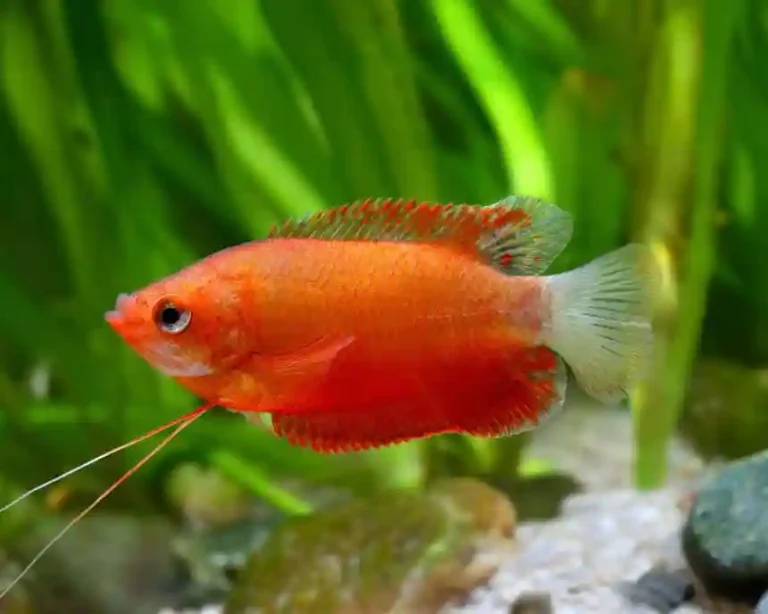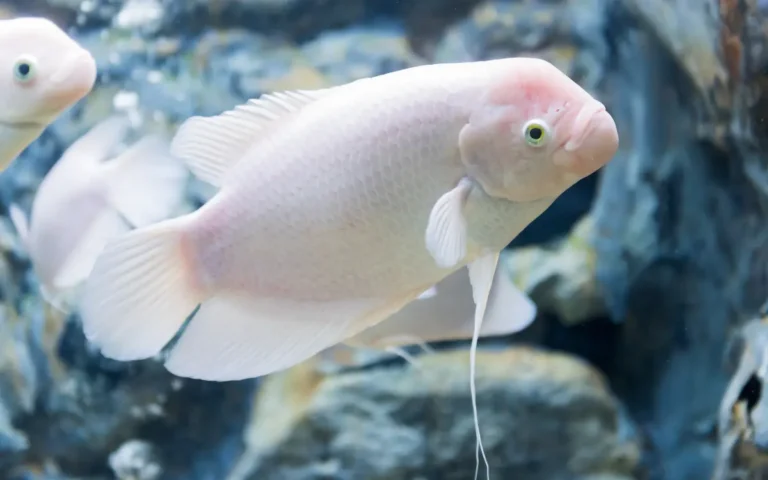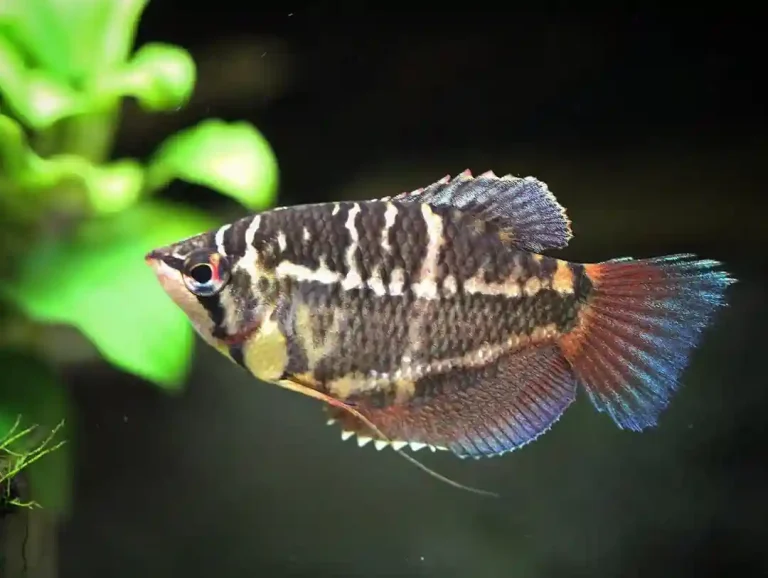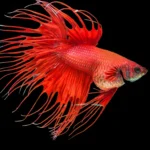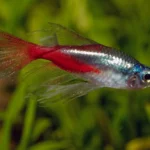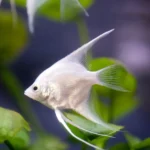Ember Tetras (Hyphessobrycon amandae) are small, peaceful freshwater fish known for their fiery orange color and active schooling behavior. Perfect for nano tanks and planted aquariums, they thrive in soft, warm water with gentle tank mates. These fish are beginner-friendly and add constant movement to any community tank. In this guide, you’ll learn how to set up the ideal tank, maintain water parameters, choose suitable food, and pick the best companions for a healthy Ember Tetra habitat.
Ember Tetra Overview
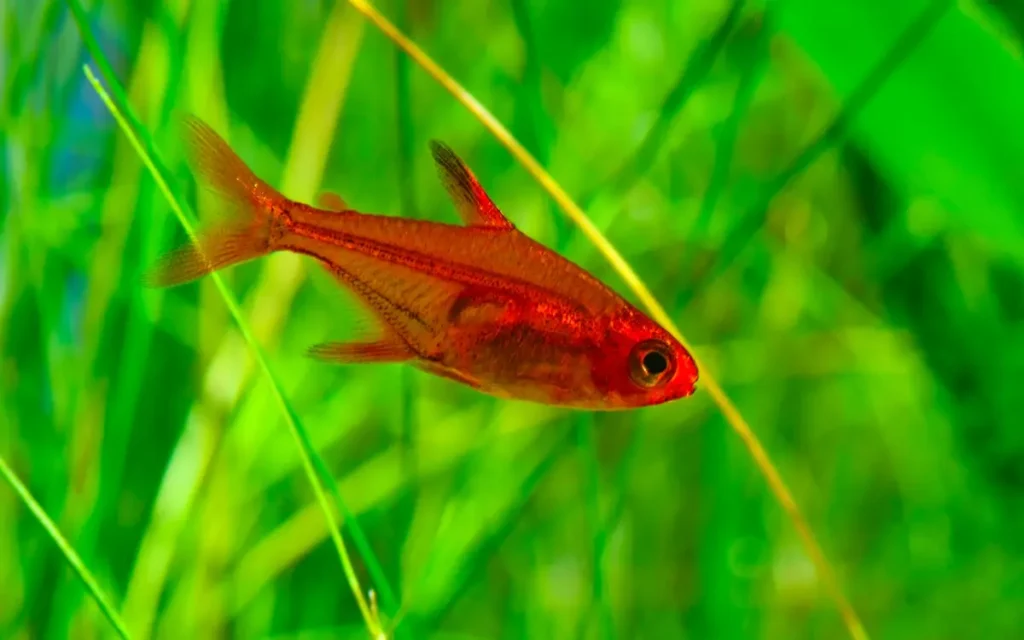
Native to the Rio Araguaia basin in Brazil, Ember Tetras are part of the characin family and are one of the most popular nano fish for freshwater aquariums. Their size, color, and peaceful nature make them a top choice for aquascaped and community tanks.
Quick Profile
| Feature | Details |
| Scientific Name | Hyphessobrycon amandae |
| Size | 0.6–0.8 inches |
| Lifespan | 2–4 years |
| Tank Size | 10 gallons or more |
| Temperature | 72–82°F |
| pH | 5.5–7.0 |
| Behavior | Peaceful, schooling |
Tank Setup for Ember Tetras
Minimum Tank Size
A 10-gallon tank is the minimum for a small group. A long tank gives them more space to school and swim naturally.
Plants and Decor
They prefer a planted tank with plenty of hiding spots. Use fine-leaved plants like Java moss, Hornwort, and Rotala. Floating plants are also great—they create shade and make the tetras feel secure.
Lighting and Filtration
Use moderate lighting to highlight their color without stressing them. Sponge filters or HOB filters with gentle flow are ideal—strong currents can disturb their natural behavior.
Water Parameters & Maintenance
- Temperature: 72–82°F (ideal: 76–78°F)
- pH: 5.5–7.0
- Water Hardness: Soft to moderately hard
- Ammonia & Nitrite: 0 ppm
- Nitrate: < 20 ppm
Do weekly 25–30% water changes. Keep your tank stable—these tetras are hardy but don’t like sudden changes.
Feeding Ember Tetras
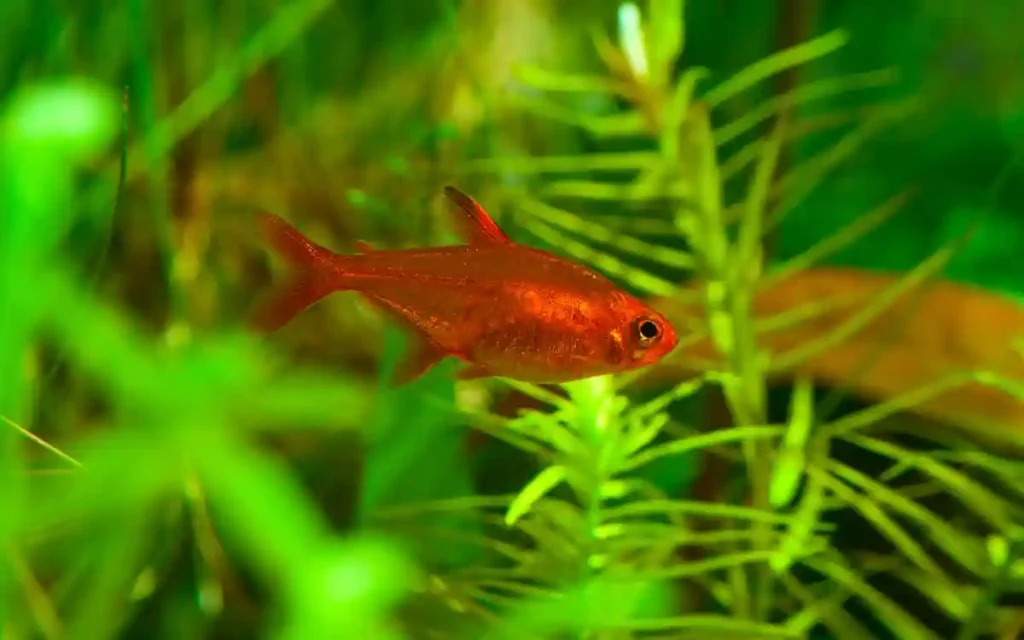
What to Feed
Ember Tetras have small mouths but big appetites. Feed them a mix of:
- Crushed flakes
- Micro pellets
- Live or frozen brine shrimp
- Daphnia and microworms
How Often
Feed 2–3 small meals daily. They are mid-dwellers and quick eaters—so only feed what they can finish in a couple of minutes.
Behavior & Schooling
Ember Tetras are peaceful and active. They are happiest in groups of at least 8–10. In schools, they swim confidently, display brighter colors, and interact more naturally.
In small numbers, they can become shy or dull in color. A larger group helps them feel secure and brings out their best behavior.
Best Tank Mates for Ember Tetras
Stick with peaceful, small-sized species. Avoid anything aggressive or too large.
Ideal Companions:
- Chili Rasboras
- Neon Tetras
- Celestial Pearl Danios
- Pygmy Corydoras
- Otocinclus
- Cherry Shrimp (adult)
Avoid: Barbs, Bettas, large cichlids, and fin-nippers.
Breeding Ember Tetras
Breeding is possible with the right setup.
How to Encourage Spawning:
- Raise temperature to around 78–80°F
- Use a breeding tank with soft water
- Add fine-leaved plants or a spawning mop
- Feed high-protein live foods
They scatter eggs, which may fall to the bottom or stick to plants. Remove adults after spawning to protect the eggs.
Raising the Fry:
- Eggs hatch in 24–36 hours
- Feed infusoria or commercial fry food at first
- Move to baby brine shrimp once they’re larger
Common Health Issues
Healthy Ember Tetras rarely get sick, but stress or poor water quality can cause:
- Fin rot
- Ich (white spots)
- Stress-related color fading
Prevention Tips:
- Test water weekly
- Quarantine new fish
- Avoid overfeeding or overcrowding
Is the Ember Tetra Right for You?
If you want a peaceful, colorful, and beginner-friendly fish, Ember Tetras are a great pick. They’re ideal for community tanks, especially planted nano aquariums, and thrive when kept in groups.
FAQs
Are Ember Tetras beginner-friendly?
Yes, they are easy to care for with stable water conditions.
Can they live in a 5-gallon tank?
It’s possible for a small group, but 10 gallons is better for schooling behavior.
Do Ember Tetras nip fins?
No, they are peaceful and won’t nip other fish.
Will they eat shrimp?
They’re generally shrimp-safe, especially with adult shrimp.
Do they need a heater?
Yes. Ember Tetras are tropical fish and need stable, warm temperatures.

